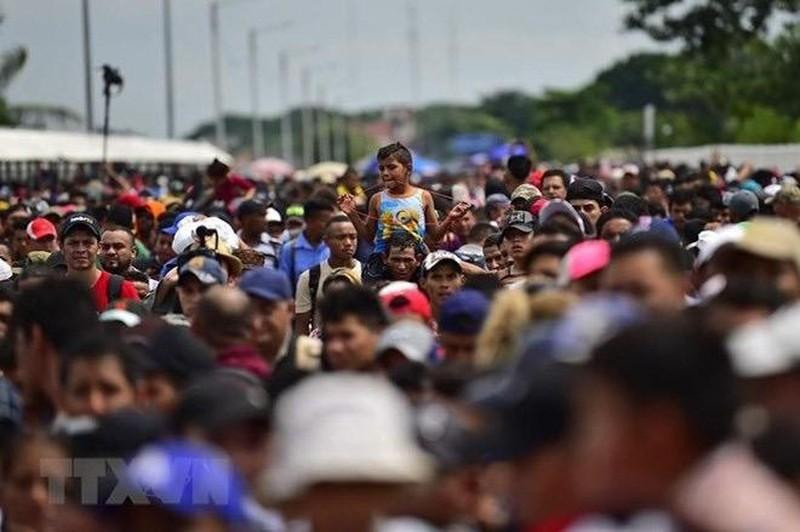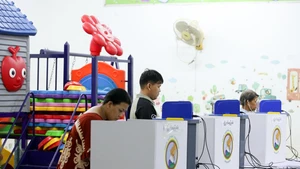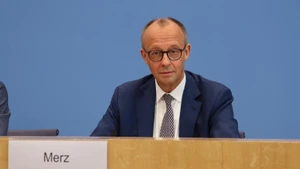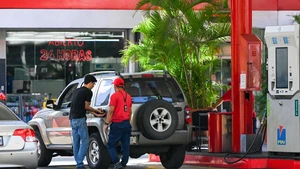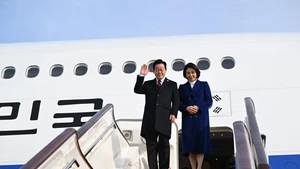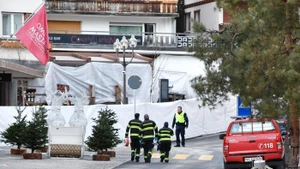According to the Cuban Ministry of the Interior, the meeting between representatives of the Cuban border force and the US coast guard took place in Havana, with an atmosphere of mutual respect.
The two sides agreed to step up cooperation on combating illegal migration and drug trafficking, as well as opening up the door for future technical exchange.
Recently, the US has been increasing its border patrol operations to prevent the flow of illegal migrants from Cuba and other countries in the Caribbean into the US.
It is not difficult to explain the determination of US President Joe Biden's administration to crack down on illegal human trafficking lines. As the US is witnessing a massive wave of migration into the country at an alarming rate, tthis is hreatening security and stability and putting great pressure on the social security system.
Since October, 2021, US border forces have arrested nearly two million people illegally crossing the border. About 9,400 migrants have been brought to Washington since April 2022, and hundreds more are expected to arrive this fall.
Washington, DC, Mayor Muriel Bowser was forced to declare a public emergency related to buses carrying migrants from Texas and Arizona to the US capital. She also decided to set up a new Office of Migrant Services, to deal with issues related to migrants.
Recognizing that the migration crisis is a serious disease in the region, no country can "solve it alone" but all need the cooperation of the international community. The US has cooperated with Mexico, Guatemala, Honduras... to build a mechanism for information exchange, to dismantle human trafficking rings, and to strengthen legal channels to ensure safe, orderly and humane migration.
The International Organization for Migration (IOM) has also recommended that governments in the region set up a body responsible for collecting and systematising data on migrant deaths, developing synchronous and harmonious public policies on migrants.
Along with protecting migrants, a sustainable and focused solution to build a "wall of prosperity" in Central America to stop the migration wave right at the starting point has been introduced. The US and Mexico have launched initiatives to create jobs for young people, attracting investment capital to improve the economy in Central America.
However, the ambition of building a wall of prosperity, a common development vision for the Americas seems far away, because it will take a lot of time, as well as the material and efforts of the regional community.
Mexican President Andres Manuel Lopez Obrador once urged the US to implement an investment package for the Central American region worth 4 billion USD which Washington has committed to, thereby turning words into practical and concrete action. This is especially meaningful as the spiral of poverty, violence, disease continues to spread in the Americas.
The impact of the conflict in Ukraine has left Latin American governments struggling to contain an inflation storm. Credit rating agency Moody's said that inflation will restrain economic growth in Latin America until 2023. In addition, the Americas are currently the epicentre of the global monkey pox outbreak, with more than 30,000 recorded cases.
Reality shows that drastic measures such as cutting aid to transit countries or temporarily closing borders cannot effectively and sustainably solve the migration crisis. This is a challenge at the regional level that no single country can cope with on its own.
Therefore, the fact that countries tend to put aside differences to seek instead cooperation and dialogue on the migration crisis are steps in the right direction, showing a willingness to solve common challenges synchronously and comprehensively.
